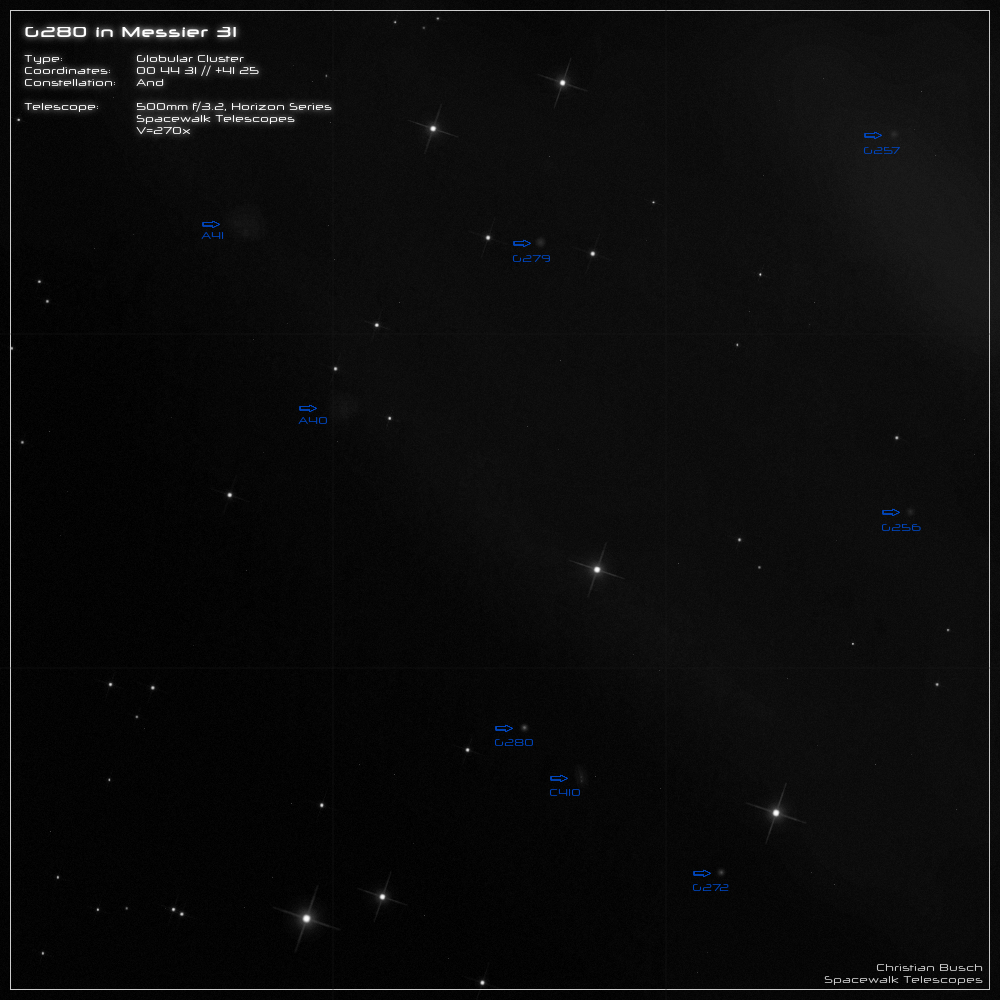M31-G280 and more...
The field around the extragalactic globular cluster G280 is very interesting, because here in an area of 15'x15' (arc minutes) a total of five globular
clusters (G 256/257/272/279/280), two brighter star clouds (A40/41) and one open star cluster (C410) can be observed.
M31-G280 is with an apparent magnitude of 14.1mag after "Mayall II" the second brightest globular cluster observable in the galaxy Messier 31.
Under a dark sky a telescope with 8" aperture is sufficient. The absolute magnitude of the cluster is calculated as M= -10.3mag, which corresponds
to a luminosity of 1.15 million suns. So it is as bright as "Omega Centauri". If G280 is similarly massive, it could contain 10 million stars with a
total mass of 4 million solar masses.
The two stellar clouds A40 and A41 have an apparent diameter of 0.6' (arcminutes), which corresponds to a true size of 410 light-years. They
appear in a telescope about as large as Jupiter.
----------------------------------------------------------------------------------------------------------------------------------------------
In my 20" f/3.2 telescope the two globular clusters G280 and G272 are visible already at a magnification of 120x as brighter, diffuse light blobs. Also
the two star clouds are slightly visible.
The most beautiful view of the whole field is at 270x. All 5 globular clusters can be seen without problems - G280 of course is the easiest. It appears
clearly fuzzy and gets brighter towards the center - in its core you find a brighter stellar nucleus. Really fascinating! The two stellar clouds now also
show first details in the form of brighter areas, but these are only indicated. Most difficult is the observation of "C410", but with indirect vision it appears
as an elongated cloud, in which two faint "little stars" are embedded.
The halo of Messier 31 is also well visible, exciting is especially a slightly brighter spiral arm that runs through the entire field of view! :))

